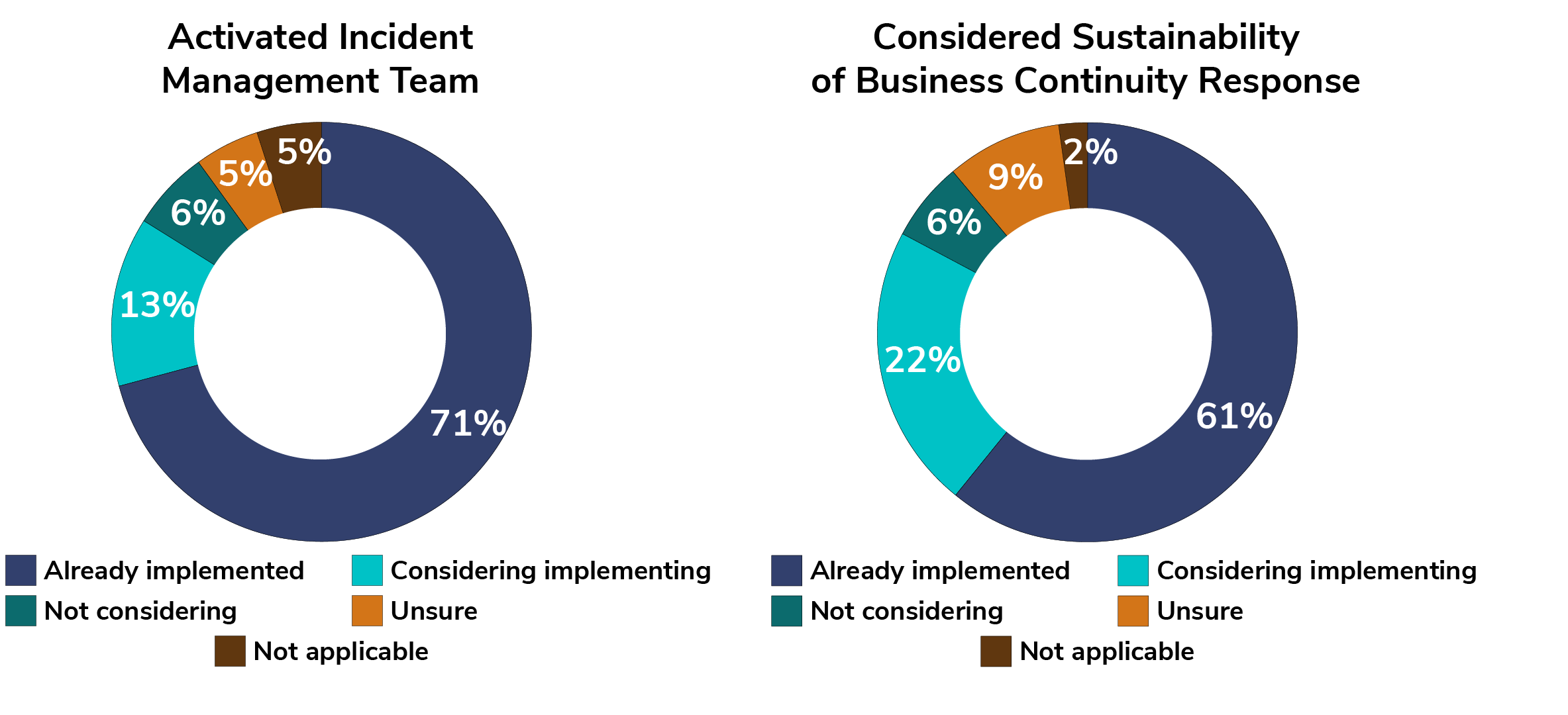BCI Study: State of Organizational Business Continuity Plan Implementation
Late last week, the Business Continuity Institute (BCI) released Coronavirus: Organizational Preparedness 20.03.2020, a study reporting results from a survey on organizational response to the COVID-19 pandemic. The study is available for free with registration.
Most organizations have activated incident management teams to manage the business disruption either happening or anticipated as a result of the pandemic. This means that at most firms, representatives from different organizational functions from security and IT to human resources, legal, and communications have convened to look at their business continuity plans based on the circumstances the pandemic presents. It’s interesting to note that 61 percent report that their organizations have examined the sustainability of their business continuity response plan. That’s of particular importance as the widespread scope of the measures many countries have taken would have been hard, if not impossible, to predict, and the duration of the measures are indeterminant. Often incidents and aftereffects are measured in days and weeks, not months.

Fewer organizations (56 percent) report having tested their plans through exercises. Such exercises are crucial to being able to stand up a crisis response effectively. They create and reinforce a shared understanding of the responsibilities each member of the incident management team has, and a good exercise will demonstrate how the team works together to address and solve unexpected developments.

The BCI survey had more than 600 respondents from around the world—53 percent Europe, 16 percent North America, 10 percent Australia, nine percent Africa, seven percent Latin America, and five percent Middle East. In addition to the incident management and business continuity questions, the survey examines how organizations optimized supply chains during the early stages of the pandemic, how they prepared for remote work and IT challenges, and how travel and other personnel policies and procedures were affected.
For more security-related pandemic resources, access ASIS’s Disease Outbreak: Security Resources page.
